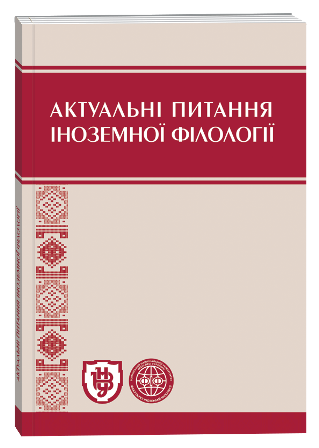INVESTIGATING AMBIGUITY: A SEMANTIC ANALYSIS OF INTENTIONAL AND UNINTENTIONAL AMBIGUITY
Keywords:
linguistic ambiguity notion, semantic analysis, intentional/conscious ambiguity, unintentional/subconscious ambiguity, interpretation of meaning, transformational rulesAbstract
The article concerns the concept of ambiguity in terms of its intentional vs unintentional usage with reference to phonology, grammar and lexis, presenting the corresponding reasons and consequences in everyday communication. Ambiguity as a linguistic phenomenon has already been in the focus of investigation from different points of view, namely phonological, grammatical and lexical. Taking into account the issues mentioned above, the article dwells on both intentional and unintentional ambiguity or in other words its conscious and subconscious aspects. The analysis carried out covers different notions of the phenomena being compared, contrasted and described with reference to grammar, phonology and lexis. The comparison between conscious and subconscious ambiguity has proved that intentional usage of ambiguous items is aimed at making everyday communication more expressive and vivid appealing to our sense of humour, while subconscious ambiguity may be treated as a beneficial aspect, but it also may result in confusion and embarrassment. Intentional ambiguity turned out to be quite effective in advertising and, thus. may be in the focus of further studies.
References
Batko A. When bad grammar happens to good people: how to avoid common errors in English / A. Batko. – USA : The Career Press Inc, 2004. – 256 p.
Danny D. Steinberg, Jakobovits Leon A. Semantics. An Interdisciplinary reader in philosophy, linguistics and psychology / Danny D. Steinberg, Leon A. Jakobovits. – London : Cambridge University Press, 1978. – 616 p.
Deignan A. Metaphor and Corpus Linguistics / A. Deignan. – Philadelphia : John Benjamins Publishing company, 2005. – 236 p.
Hughes W., Lavery J. Critical Thinking, Fourth Edition: An Introduction to the Basic Skills / W. Hughes, J. Lavery. – Canada : Broadview Press Ltd., 2004. – 403 p.
Keith A. Natural Language Semantics / A. Keith. – Great Britain : Blackwell Publishers, 2001. – 525 p.
Lewandowska-Tomaszczyk B. Asymmetric Events / B. Lewandowska-Tomaszczyk. – The Netherlands : John Benjamins Publishing Company, 2008. – 287 p.
Longman Dictionary of Contemporary English / edsted by S. Bullon. – Harlow : Pearson Longman, 2003. – 1949 p.
O’Connor J. Better English Pronunciation / J. O’Connor. – Cambridge : Cambridge University Press, 2006. – Tom 1. – 152 p.
Sebeok T. A. Current Trends in Linguistics / T. A. Sebeok. – The Netherlands : Mouton & Co, 1966. – 382 p.
Small S. Lexical Ambiguity Resolution: perspectives from psycholinguistics / S. Small, G. Cottrell, M. Tanenhaus. – United States of America : Morgan Kaufmann Publishers Inc., 1988. – 161 p.
Ullmann S. Semantics. An Introduction to the Science of Mani / S. Ullmann. – Oxford : Basil Blackwell, 1972. – 278 p.
Yule G. The Study of Language / G. Yule. – Cambridge : Cambridge University Press, 2006. – 273 p.
Internet sources
MultiLingual Dictionary. [Electronic resource]. – Mode of access : https://www.allwords.com
Cheshire coffee online [Electronic resource]. – Mode of access : http://english-coffee.com/showthread.php?t=108
Polysemy, homonymy and reference [Electronic resource]. – Mode of access : www.res-per-nomen.org/respernomen/pubs/ling/SEM02
Latin, ad nauseam. Lingua Franca [Electronic resource]. – Mode of access : http://www.abc.net.au/rn/linguafranca/stories/2009/2596385.htm
Books online [Electronic resource]. – Mode of access : www.linguists.org.cn/doc/su200607/su2006071.pdf
Downloads
Published
How to Cite
Issue
Section
License
Copyright (c) 2025 Інеса Байбакова, Александра Гасько

This work is licensed under a Creative Commons Attribution 4.0 International License.







